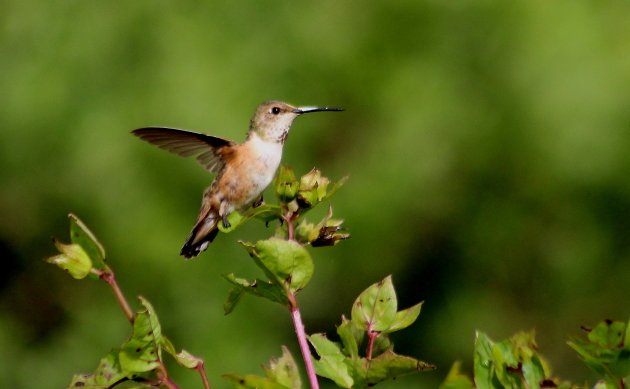
Central Mexico, where I live, has a monsoon climate. In other words, we tend to have heavy rains from late May or June through October, and little or no rains during the winter and spring. This means that most of our vegetation grows during the summer and flowers (and/or fruits) during the fall.
Because of this pattern, during the months of September and October you will see Mexico’s many Salvia species blooming everywhere you look. And Salvias mean hummingbirds!
That is why, during these months, I make sure to head to Laurelito, just to the south of my state’s capitol city of Morelia. This tiny town, technically within Morelia’s city limits, sits at 7,400 feet (2,260 m) above sea level, on the side of the mountain known as Pico Azul. It is surrounded by some very birdy pine forests and grasslands. But in the fall, it is also ablaze with Salvias. In other words, it is hummingbird heaven.
One study stated that my state of Michoacán has 75 different species of Salvia. Most of these are shaped to attract hummingbirds. Of course, not all of these Salvias occur at Laurelito, but I suspect there are a dozen or more species. And I have personally seen ten hummingbird species feeding on Salvias there.
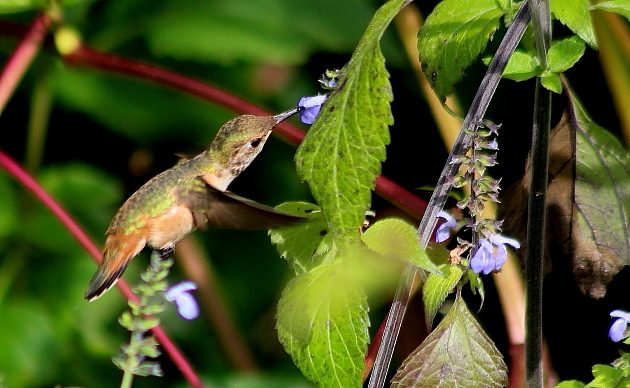 A migratory female Allen’s (or perhaps Rufous) Hummingbird with, I believe, Salvia plurispicata
A migratory female Allen’s (or perhaps Rufous) Hummingbird with, I believe, Salvia plurispicata
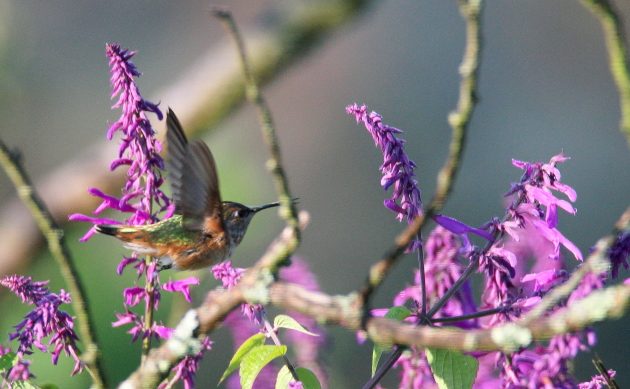 Another female Allen’s (or Rufous) Hummingbird, with Salvia purpurea
Another female Allen’s (or Rufous) Hummingbird, with Salvia purpurea
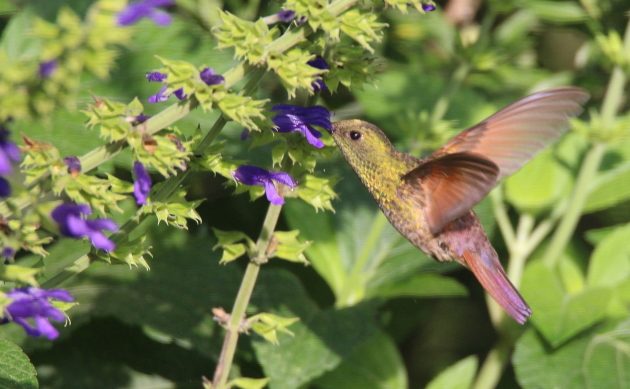 A Berylline’s Hummingbird, with Salvia mexicana
A Berylline’s Hummingbird, with Salvia mexicana
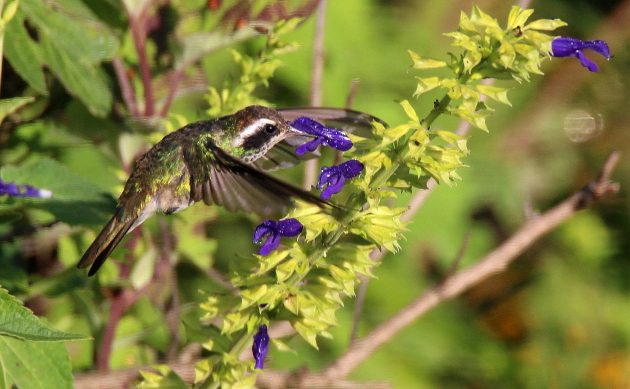 This female White-eared Hummingbird is also feeding on a Salvia mexicana.
This female White-eared Hummingbird is also feeding on a Salvia mexicana.
Here is a male White-eared Hummingbird I saw at Laurelito. Look what happened when he turned to face me!
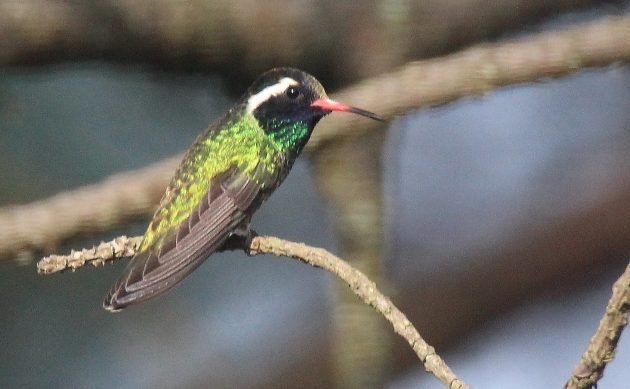
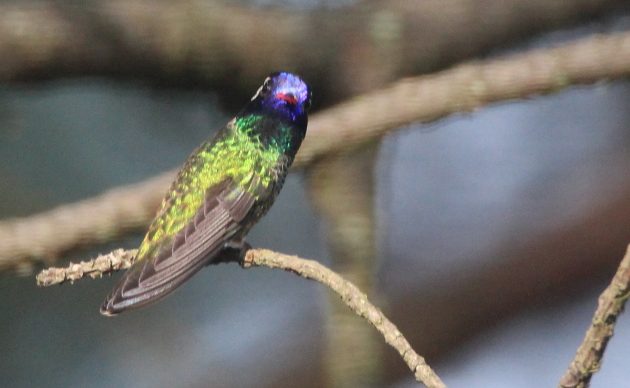
The Broad-billed Hummingbird is, of course, also present. This one was feeding on one of the few introduced flowering plants in the town:
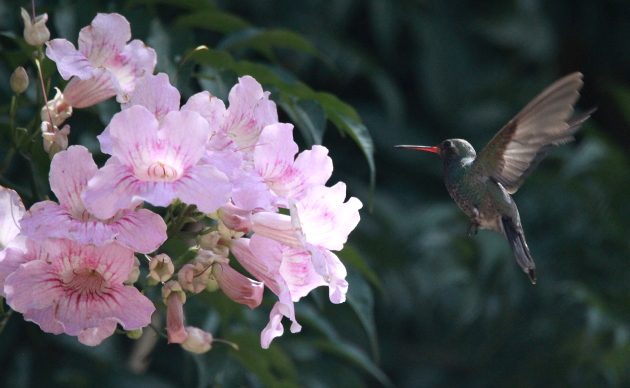
Broad-tailed Hummingbirds are also reasonably common. While I try to take my photos from an ethical distance, this Broad-tailed was having none of that. She wanted to get up-close and personal. As did the migratory Rufous Hummingbird shown below her. In both cases, they landed, and I just froze and clicked away. Hummingbirds know no fear.
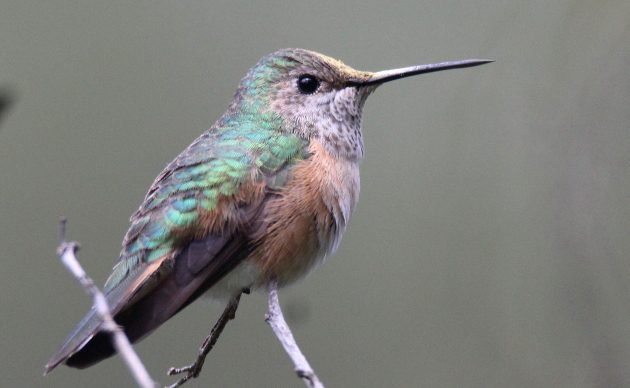
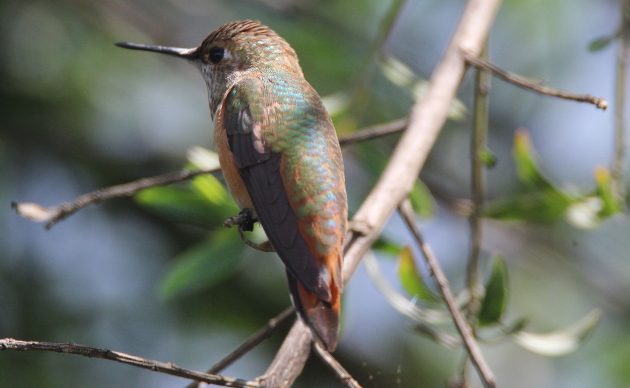
I went back to Laurelito last week, knowing that we will be travelling next month, and I will miss the peak of the hummer season. Once again, the Rufous Hummingbirds had arrived, and were showing off their signature tail patterns, front and back. Don’t you love it when they do that? (Also, the you can see at least one, and perhaps two, other Salvia species in these photos.)
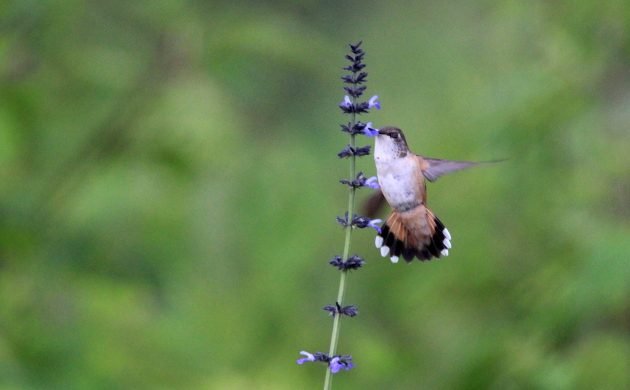
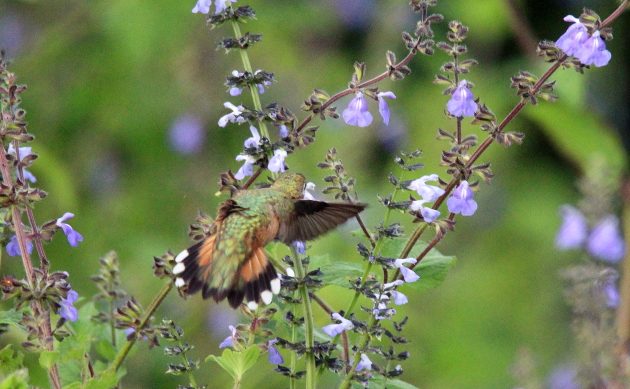
Before ending this post, I would like to mention my favorite way to prolong the pleasure of this kind of outing: While I would never uproot a wild plant, I often take a few small (3-4 inch) vegetative cuttings from the flowering plants I encounter in the wild. During our rainy season, these root with incredible ease in my homemade compost. As a result, in my garden you can currently find one native species of hummingbird mint (also known as Mexican hyssop), two species of penstemon, and seven different Salvias (plus several more in the past). The Salvia purpurea and mexicana you see above not only grow in my garden, but have reseeded and spread there for years. I do not provide any artificial food for hummingbirds, but with so many of their favorite plants available, they are constantly present. I have also been reforesting our church lot with wild-gathered acorns and other tree seeds found while birding… but that is material for a future post!











Leave a Comment